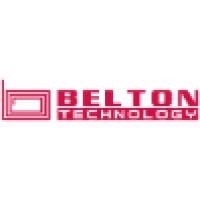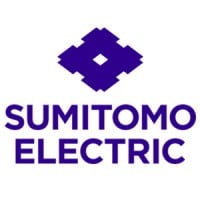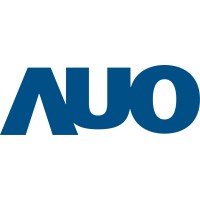
Belton Technology Group Company Cyber Security Posture
beltontechnology.comEstablished in 1988, Belton Technology Group is ISO 9001, 14001, QS9000 certified and UL listed components and full turnkey contract manufacturer of - Flexible Printed Circuit Boards - SMT Flip Chip, PCB and FPCB Assemblies - Micro Module Packaging and Assemblies - Plastic Injection and Overmolded Components - Magnetic Coil Assemblies - Precision Machining & Autolathe Components - Precision Metal Stamping - Deep Drawn and Aluminum Extrued Components - Complete Box Build and Assemblies With in-house capabilities in Tool Design and Fabrication, Automation, Material Science Laboratory, Failure Analysis and Clean Room Components Assembly, we are able to offer vertically integrated manufacturing services to our customers, from product design, prototype samples, re-engineering cost effective manufacturing processes to on-time delivery of high quality products. We employ Six Sigma & Lean Manufacturing methodologies in our continuous quest for operation excellence. From your design to complete product build and solution, we provide a vertically integrated "one-stop-shop" solution with full turnkey design and manufacturing services.
BTG Company Details
belton-technology-group
10,001+ employees
967
335
Appliances, Electrical, and Electronics Manufacturing
beltontechnology.com
8
BEL_1294205
In-progress
Between 700 and 800
This score is AI-generated and less favored by cyber insurers, who prefer the TPRM score.
 BTG Global Score
BTG Global Score.png)

Belton Technology Group Company Scoring based on AI Models
| Model Name | Date | Description | Current Score Difference | Score |
|---|---|---|---|---|
| AVERAGE-Industry | 03-12-2025 | This score represents the average cybersecurity rating of companies already scanned within the same industry. It provides a benchmark to compare an individual company's security posture against its industry peers. | N/A | Between 700 and 800 |
Belton Technology Group Company Cyber Security News & History
| Entity | Type | Severity | Impact | Seen | Url ID | Details | View |
|---|
Belton Technology Group Company Subsidiaries

Established in 1988, Belton Technology Group is ISO 9001, 14001, QS9000 certified and UL listed components and full turnkey contract manufacturer of - Flexible Printed Circuit Boards - SMT Flip Chip, PCB and FPCB Assemblies - Micro Module Packaging and Assemblies - Plastic Injection and Overmolded Components - Magnetic Coil Assemblies - Precision Machining & Autolathe Components - Precision Metal Stamping - Deep Drawn and Aluminum Extrued Components - Complete Box Build and Assemblies With in-house capabilities in Tool Design and Fabrication, Automation, Material Science Laboratory, Failure Analysis and Clean Room Components Assembly, we are able to offer vertically integrated manufacturing services to our customers, from product design, prototype samples, re-engineering cost effective manufacturing processes to on-time delivery of high quality products. We employ Six Sigma & Lean Manufacturing methodologies in our continuous quest for operation excellence. From your design to complete product build and solution, we provide a vertically integrated "one-stop-shop" solution with full turnkey design and manufacturing services.
Access Data Using Our API

Get company history
.png)
BTG Cyber Security News
Managing the Risks of China’s Access to U.S. Data and Control of Software and Connected Technology
2024: Congress enacts legislation prohibiting U.S. data brokers from transferring the “personally identifiable sensitive data of a United States ...
Treasury imposes sanctions on Chinese firm over attack on U.S. routers
The Treasury Department sanctioned a Chinese company behind the Flax Typhoon hacks, which infiltrated around 260000 routers and other ...
SRS Contractor Named Cybersecurity Awareness Month Champion
EM's liquid waste contractor at the Savannah River Site (SRS) has been named a champion of cybersecurity awareness for ensuring its people and programs stay ...
IBM: 6 Black Colleges Getting Cybersecurity Centers
Six historically Black universities in five Southern states will be getting IBM cybersecurity centers aimed at training underrepresented communities.
Chief Information Officer Talks Savannah River Site Cybersecurity with Army School
The Savannah River Site's (SRS) chief information officer recently spoke with students in a US Army Cyber School course on advanced cyber warfare about ...
EM Continues IT Collaboration
Federal and contractor employees from EM gathered at DOE headquarters this month to collaborate on effective ways to improve operations.

BTG Similar Companies

PIAL LEGRAND DO BRASIL
Fundada em 1948, a Pial tornou-se nas décadas seguintes a líder brasileira em interruptores e tomadas. Em 1977 foi adquirida pelo Grupo Legrand com sede em Limoges-França ampliando, ainda mais, a oferta de materiais elétricos para baixa tensão com a introdução de novas tecnologias reconhecidas mundi

FSP TECHNOLOGY INC
FSP GROUP FSP Group is one of the global leading power supply manufacturer. Since its establishment in 1993, FSP Group has followed the management conception “service, profession, and innovation” to continuously fulfill its responsibilities as a green energy resolution supplier. With the combination

Sanmina
Sanmina Corporation (Nasdaq: SANM) is a leading integrated manufacturing solutions provider serving the fastest-growing segments of the global Electronics Manufacturing Services (EMS) market. Recognized as a technology leader, Sanmina Corporationprovides end-to-end manufacturing solutions, deliverin

Sumitomo Electric
The Sumitomo Electric Group is a global network of 415 group companies in 40 countries. Established in 1897 with the founding of Sumitomo Electric in Osaka, Japan, the company initially focused on copper wire production for electric power cables. Today, we have diversified into five major business s

Tianma Microelectronics
Tianma Micro-electronics Co., Ltd (Tianma) specializes in providing display solutions and efficient support services worldwide. We were originally established in 1983 and publicly listed on the Shenzhen Stock Exchange (SZ. 000050) in 1995. Our company is committed to providing leading technology

AUO
AUO Corp. is one of the world’s leading providers of optoelectronic solutions. Based on its profound R&D and manufacturing experience, AUO offers a full range of display applications and smart solutions integrating software and hardware, and leverages its core expertise to enter new business areas

Frequently Asked Questions (FAQ) on Cybersecurity Incidents
BTG CyberSecurity History Information
Total Incidents: According to Rankiteo, BTG has faced 0 incidents in the past.
Incident Types: As of the current reporting period, BTG has not encountered any cybersecurity incidents.
Total Financial Loss: The total financial loss from these incidents is estimated to be {total_financial_loss}.
Cybersecurity Posture: The company's overall cybersecurity posture is described as Established in 1988, Belton Technology Group is ISO 9001, 14001, QS9000 certified and UL listed components and full turnkey contract manufacturer of - Flexible Printed Circuit Boards - SMT Flip Chip, PCB and FPCB Assemblies - Micro Module Packaging and Assemblies - Plastic Injection and Overmolded Components - Magnetic Coil Assemblies - Precision Machining & Autolathe Components - Precision Metal Stamping - Deep Drawn and Aluminum Extrued Components - Complete Box Build and Assemblies With in-house capabilities in Tool Design and Fabrication, Automation, Material Science Laboratory, Failure Analysis and Clean Room Components Assembly, we are able to offer vertically integrated manufacturing services to our customers, from product design, prototype samples, re-engineering cost effective manufacturing processes to on-time delivery of high quality products. We employ Six Sigma & Lean Manufacturing methodologies in our continuous quest for operation excellence. From your design to complete product build and solution, we provide a vertically integrated "one-stop-shop" solution with full turnkey design and manufacturing services..
Detection and Response: The company detects and responds to cybersecurity incidents through {description_of_detection_and_response_process}.
Incident Details
Incident 1: Ransomware Attack
Title: {Incident_Title}
Description: {Brief_description_of_the_incident}
Date Detected: {Detection_Date}
Date Publicly Disclosed: {Disclosure_Date}
Date Resolved: {Resolution_Date}
Type: {Type_of_Attack}
Attack Vector: {Attack_Vector}
Vulnerability Exploited: {Vulnerability}
Threat Actor: {Threat_Actor}
Motivation: {Motivation}
Incident 2: Data Breach
Title: {Incident_Title}
Description: {Brief_description_of_the_incident}
Date Detected: {Detection_Date}
Date Publicly Disclosed: {Disclosure_Date}
Date Resolved: {Resolution_Date}
Type: {Type_of_Attack}
Attack Vector: {Attack_Vector}
Vulnerability Exploited: {Vulnerability}
Threat Actor: {Threat_Actor}
Motivation: {Motivation}
Common Attack Types: As of now, the company has not encountered any reported incidents involving common cyberattacks.
Identification of Attack Vectors: The company identifies the attack vectors used in incidents through {description_of_identification_process}.
Impact of the Incidents
Incident 1: Ransomware Attack
Financial Loss: {Financial_Loss}
Data Compromised: {Data_Compromised}
Systems Affected: {Systems_Affected}
Downtime: {Downtime}
Operational Impact: {Operational_Impact}
Conversion Rate Impact: {Conversion_Rate_Impact}
Revenue Loss: {Revenue_Loss}
Customer Complaints: {Customer_Complaints}
Brand Reputation Impact: {Brand_Reputation_Impact}
Legal Liabilities: {Legal_Liabilities}
Identity Theft Risk: {Identity_Theft_Risk}
Payment Information Risk: {Payment_Information_Risk}
Incident 2: Data Breach
Financial Loss: {Financial_Loss}
Data Compromised: {Data_Compromised}
Systems Affected: {Systems_Affected}
Downtime: {Downtime}
Operational Impact: {Operational_Impact}
Conversion Rate Impact: {Conversion_Rate_Impact}
Revenue Loss: {Revenue_Loss}
Customer Complaints: {Customer_Complaints}
Brand Reputation Impact: {Brand_Reputation_Impact}
Legal Liabilities: {Legal_Liabilities}
Identity Theft Risk: {Identity_Theft_Risk}
Payment Information Risk: {Payment_Information_Risk}
Average Financial Loss: The average financial loss per incident is {average_financial_loss}.
Commonly Compromised Data Types: The types of data most commonly compromised in incidents are {list_of_commonly_compromised_data_types}.
Incident 1: Ransomware Attack
Entity Name: {Entity_Name}
Entity Type: {Entity_Type}
Industry: {Industry}
Location: {Location}
Size: {Size}
Customers Affected: {Customers_Affected}
Incident 2: Data Breach
Entity Name: {Entity_Name}
Entity Type: {Entity_Type}
Industry: {Industry}
Location: {Location}
Size: {Size}
Customers Affected: {Customers_Affected}
Response to the Incidents
Incident 1: Ransomware Attack
Incident Response Plan Activated: {Yes/No}
Third Party Assistance: {Yes/No}
Law Enforcement Notified: {Yes/No}
Containment Measures: {Containment_Measures}
Remediation Measures: {Remediation_Measures}
Recovery Measures: {Recovery_Measures}
Communication Strategy: {Communication_Strategy}
Adaptive Behavioral WAF: {Adaptive_Behavioral_WAF}
On-Demand Scrubbing Services: {On_Demand_Scrubbing_Services}
Network Segmentation: {Network_Segmentation}
Enhanced Monitoring: {Enhanced_Monitoring}
Incident 2: Data Breach
Incident Response Plan Activated: {Yes/No}
Third Party Assistance: {Yes/No}
Law Enforcement Notified: {Yes/No}
Containment Measures: {Containment_Measures}
Remediation Measures: {Remediation_Measures}
Recovery Measures: {Recovery_Measures}
Communication Strategy: {Communication_Strategy}
Adaptive Behavioral WAF: {Adaptive_Behavioral_WAF}
On-Demand Scrubbing Services: {On_Demand_Scrubbing_Services}
Network Segmentation: {Network_Segmentation}
Enhanced Monitoring: {Enhanced_Monitoring}
Incident Response Plan: The company's incident response plan is described as {description_of_incident_response_plan}.
Third-Party Assistance: The company involves third-party assistance in incident response through {description_of_third_party_involvement}.
Data Breach Information
Incident 2: Data Breach
Type of Data Compromised: {Type_of_Data}
Number of Records Exposed: {Number_of_Records}
Sensitivity of Data: {Sensitivity_of_Data}
Data Exfiltration: {Yes/No}
Data Encryption: {Yes/No}
File Types Exposed: {File_Types}
Personally Identifiable Information: {Yes/No}
Prevention of Data Exfiltration: The company takes the following measures to prevent data exfiltration: {description_of_prevention_measures}.
Handling of PII Incidents: The company handles incidents involving personally identifiable information (PII) through {description_of_handling_process}.
Ransomware Information
Incident 1: Ransomware Attack
Ransom Demanded: {Ransom_Amount}
Ransom Paid: {Ransom_Paid}
Ransomware Strain: {Ransomware_Strain}
Data Encryption: {Yes/No}
Data Exfiltration: {Yes/No}
Ransom Payment Policy: The company's policy on paying ransoms in ransomware incidents is described as {description_of_ransom_payment_policy}.
Data Recovery from Ransomware: The company recovers data encrypted by ransomware through {description_of_data_recovery_process}.
Regulatory Compliance
Incident 1: Ransomware Attack
Regulations Violated: {Regulations_Violated}
Fines Imposed: {Fines_Imposed}
Legal Actions: {Legal_Actions}
Regulatory Notifications: {Regulatory_Notifications}
Incident 2: Data Breach
Regulations Violated: {Regulations_Violated}
Fines Imposed: {Fines_Imposed}
Legal Actions: {Legal_Actions}
Regulatory Notifications: {Regulatory_Notifications}
Regulatory Frameworks: The company complies with the following regulatory frameworks regarding cybersecurity: {list_of_regulatory_frameworks}.
Ensuring Regulatory Compliance: The company ensures compliance with regulatory requirements through {description_of_compliance_measures}.
Lessons Learned and Recommendations
Incident 1: Ransomware Attack
Lessons Learned: {Lessons_Learned}
Incident 2: Data Breach
Lessons Learned: {Lessons_Learned}
Incident 1: Ransomware Attack
Recommendations: {Recommendations}
Incident 2: Data Breach
Recommendations: {Recommendations}
Key Lessons Learned: The key lessons learned from past incidents are {list_of_key_lessons_learned}.
Implemented Recommendations: The company has implemented the following recommendations to improve cybersecurity: {list_of_implemented_recommendations}.
References
Additional Resources: Stakeholders can find additional resources on cybersecurity best practices at {list_of_additional_resources}.
Investigation Status
Incident 1: Ransomware Attack
Investigation Status: {Investigation_Status}
Incident 2: Data Breach
Investigation Status: {Investigation_Status}
Communication of Investigation Status: The company communicates the status of incident investigations to stakeholders through {description_of_communication_process}.
Stakeholder and Customer Advisories
Incident 1: Ransomware Attack
Stakeholder Advisories: {Stakeholder_Advisories}
Customer Advisories: {Customer_Advisories}
Incident 2: Data Breach
Stakeholder Advisories: {Stakeholder_Advisories}
Customer Advisories: {Customer_Advisories}
Advisories Provided: The company provides the following advisories to stakeholders and customers following an incident: {description_of_advisories_provided}.
Initial Access Broker
Incident 1: Ransomware Attack
Entry Point: {Entry_Point}
Reconnaissance Period: {Reconnaissance_Period}
Backdoors Established: {Backdoors_Established}
High Value Targets: {High_Value_Targets}
Data Sold on Dark Web: {Yes/No}
Incident 2: Data Breach
Entry Point: {Entry_Point}
Reconnaissance Period: {Reconnaissance_Period}
Backdoors Established: {Backdoors_Established}
High Value Targets: {High_Value_Targets}
Data Sold on Dark Web: {Yes/No}
Monitoring and Mitigation of Initial Access Brokers: The company monitors and mitigates the activities of initial access brokers through {description_of_monitoring_and_mitigation_measures}.
Post-Incident Analysis
Incident 1: Ransomware Attack
Root Causes: {Root_Causes}
Corrective Actions: {Corrective_Actions}
Incident 2: Data Breach
Root Causes: {Root_Causes}
Corrective Actions: {Corrective_Actions}
Post-Incident Analysis Process: The company's process for conducting post-incident analysis is described as {description_of_post_incident_analysis_process}.
Corrective Actions Taken: The company has taken the following corrective actions based on post-incident analysis: {list_of_corrective_actions_taken}.
Additional Questions
General Information
Ransom Payment History: The company has {paid/not_paid} ransoms in the past.
Last Ransom Demanded: The amount of the last ransom demanded was {last_ransom_amount}.
Last Attacking Group: The attacking group in the last incident was {last_attacking_group}.
Incident Details
Most Recent Incident Detected: The most recent incident detected was on {most_recent_incident_detected_date}.
Most Recent Incident Publicly Disclosed: The most recent incident publicly disclosed was on {most_recent_incident_publicly_disclosed_date}.
Most Recent Incident Resolved: The most recent incident resolved was on {most_recent_incident_resolved_date}.
Impact of the Incidents
Highest Financial Loss: The highest financial loss from an incident was {highest_financial_loss}.
Most Significant Data Compromised: The most significant data compromised in an incident was {most_significant_data_compromised}.
Most Significant System Affected: The most significant system affected in an incident was {most_significant_system_affected}.
Response to the Incidents
Third-Party Assistance in Most Recent Incident: The third-party assistance involved in the most recent incident was {third_party_assistance_in_most_recent_incident}.
Containment Measures in Most Recent Incident: The containment measures taken in the most recent incident were {containment_measures_in_most_recent_incident}.
Data Breach Information
Most Sensitive Data Compromised: The most sensitive data compromised in a breach was {most_sensitive_data_compromised}.
Number of Records Exposed: The number of records exposed in the most significant breach was {number_of_records_exposed}.
Ransomware Information
Highest Ransom Demanded: The highest ransom demanded in a ransomware incident was {highest_ransom_demanded}.
Highest Ransom Paid: The highest ransom paid in a ransomware incident was {highest_ransom_paid}.
Regulatory Compliance
Highest Fine Imposed: The highest fine imposed for a regulatory violation was {highest_fine_imposed}.
Most Significant Legal Action: The most significant legal action taken for a regulatory violation was {most_significant_legal_action}.
Lessons Learned and Recommendations
Most Significant Lesson Learned: The most significant lesson learned from past incidents was {most_significant_lesson_learned}.
Most Significant Recommendation Implemented: The most significant recommendation implemented to improve cybersecurity was {most_significant_recommendation_implemented}.
References
Most Recent Source: The most recent source of information about an incident is {most_recent_source}.
Most Recent URL for Additional Resources: The most recent URL for additional resources on cybersecurity best practices is {most_recent_url}.
Investigation Status
Current Status of Most Recent Investigation: The current status of the most recent investigation is {current_status_of_most_recent_investigation}.
Stakeholder and Customer Advisories
Most Recent Stakeholder Advisory: The most recent stakeholder advisory issued was {most_recent_stakeholder_advisory}.
Most Recent Customer Advisory: The most recent customer advisory issued was {most_recent_customer_advisory}.
Initial Access Broker
Most Recent Entry Point: The most recent entry point used by an initial access broker was {most_recent_entry_point}.
Most Recent Reconnaissance Period: The most recent reconnaissance period for an incident was {most_recent_reconnaissance_period}.
Post-Incident Analysis
Most Significant Root Cause: The most significant root cause identified in post-incident analysis was {most_significant_root_cause}.
Most Significant Corrective Action: The most significant corrective action taken based on post-incident analysis was {most_significant_corrective_action}.
What Do We Measure?
















Every week, Rankiteo analyzes billions of signals to give organizations a sharper, faster view of emerging risks. With deeper, more actionable intelligence at their fingertips, security teams can outpace threat actors, respond instantly to Zero-Day attacks, and dramatically shrink their risk exposure window.
These are some of the factors we use to calculate the overall score:
Identify exposed access points, detect misconfigured SSL certificates, and uncover vulnerabilities across the network infrastructure.
Gain visibility into the software components used within an organization to detect vulnerabilities, manage risk, and ensure supply chain security.
Monitor and manage all IT assets and their configurations to ensure accurate, real-time visibility across the company's technology environment.
Leverage real-time insights on active threats, malware campaigns, and emerging vulnerabilities to proactively defend against evolving cyberattacks.




